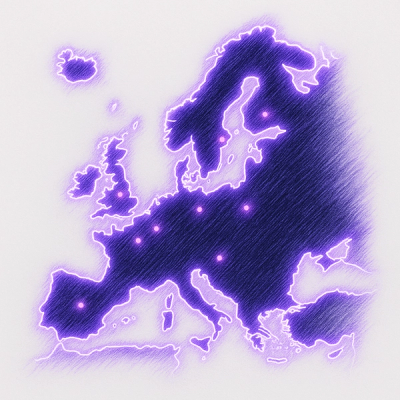Three scatter
Inspired by a GScatter (plugin for blender) in Three.js
Spread all types of objects/models into a geometry easily

Installation
npm i @jaimebboyjt/three-scatter
Why to use it
Three.js already comes with MeshSurfaceSampler you can think in three-scatter as an "extension" of it. I said it in quotes because is not quite true, three-scatter the approach is different and it comes with method to help scatter your Meshes.
Use three-scatter if you:
- Would like to scatter complex models (3D models with animations, rigging, etc)
- Want to align your model to the surface base, easily
- Would like to tweak in real-time (or with panels) seeds, or any property of your 3D model to scatter
- Want to remove collisions, easily.
NOTE:
if performance is your must, MeshSurfaceSampler is your go to, I provided a debug option to help you, but MeshSurfaceSampler is much more performance since you can (and probably should) use InstancedMesh
Additionally you can use this library to generate only the positions
Quick Demos
How to use it
Basic (constructor)
import { ThreeScatter } from 'three-scatter'
const scatter = new ThreeScatter(count, surface, model);
scene.add(scatter);
You can also scatter more than one model:
const scatter = new ThreeScatter(count, surface, [model1, model2]);
Modifying all the 3D objects
three-scatter comes with lots of handy method for you, one of the most common ones is setAll that allow you affect all the scattered models.
const scatter = new ThreeScatter(count, surface, [model1, model2, model3]);
scatter.setAll((model, index) => {
model.scale.set(0.1, 0.1, 0.1);
});
Take over mode
If you don't need ThreeScatter handle your models you can instantiate the class without any models, then get the positions:
const scatter = new ThreeScatter(count, surface);
const positions = scatter.getPositions()
you can still get different positions using the setSeeds method but you have to update your models manually.
NOTE: Using this approach means that no other internal method will have effects in your model
Methods
setSeeds(seed: number)
scatter.setSeeds(5);
Align models Y+up
scatter.alignToSurfaceNormal();
Remove collisions
scatter.removeCollisions();
Show model by axis
scatter.setAxis(
[minX, maxX],
[minY, maxY],
[minZ, maxZ]
);
Clear group
scatter.cleanGroup();
Get faces
scatter.getFaces();
Get positions
scatter.getPositions();
Options
ThreeScatter allows you more control using optional parameters.
const scatter = new ThreeScatter(count, surface, model, {
seeds<number>: 1,
useSkeletonUtils<boolean>: true
randomFn<() => number>: Math.random()
});
Debug mode
ThreeScatter comes with a debug mode that will replace all your models with a low poly mesh, and find the right position, easily.
const scatter = new ThreeScatter(count, surface, model, {
debug<boolean>: true,
debugGeometry<Geometry>: new THREE.SphereGeometry(0.5, 3, 2) ,
debugMaterial<Material>: new THREE.MeshBasicMaterial({ color: 0x800080 }),
});
You can also use the setDebug and removeDebug methods to control it after ThreeScatter is instantiated
scatter.setDebug();
scatter.removeDebug();
Distribution
You can now set the percentage of model distribution in case you are scattering more than one model.
const scatter = new ThreeScatter(count, surface, [model1, model2], {
distribution: [ 0.25, 0.75]
});
NOTE:
In order to set the distribution property, you need to have:
- An array of models
- A
distribution property with equal length than the array of model
- All the numbers inside the
distribution property needs to sum 1
Contributing
We are open to contributions, please read the contributing guide to get started.
License
MIT
Be the first to support this project here ☺️.




